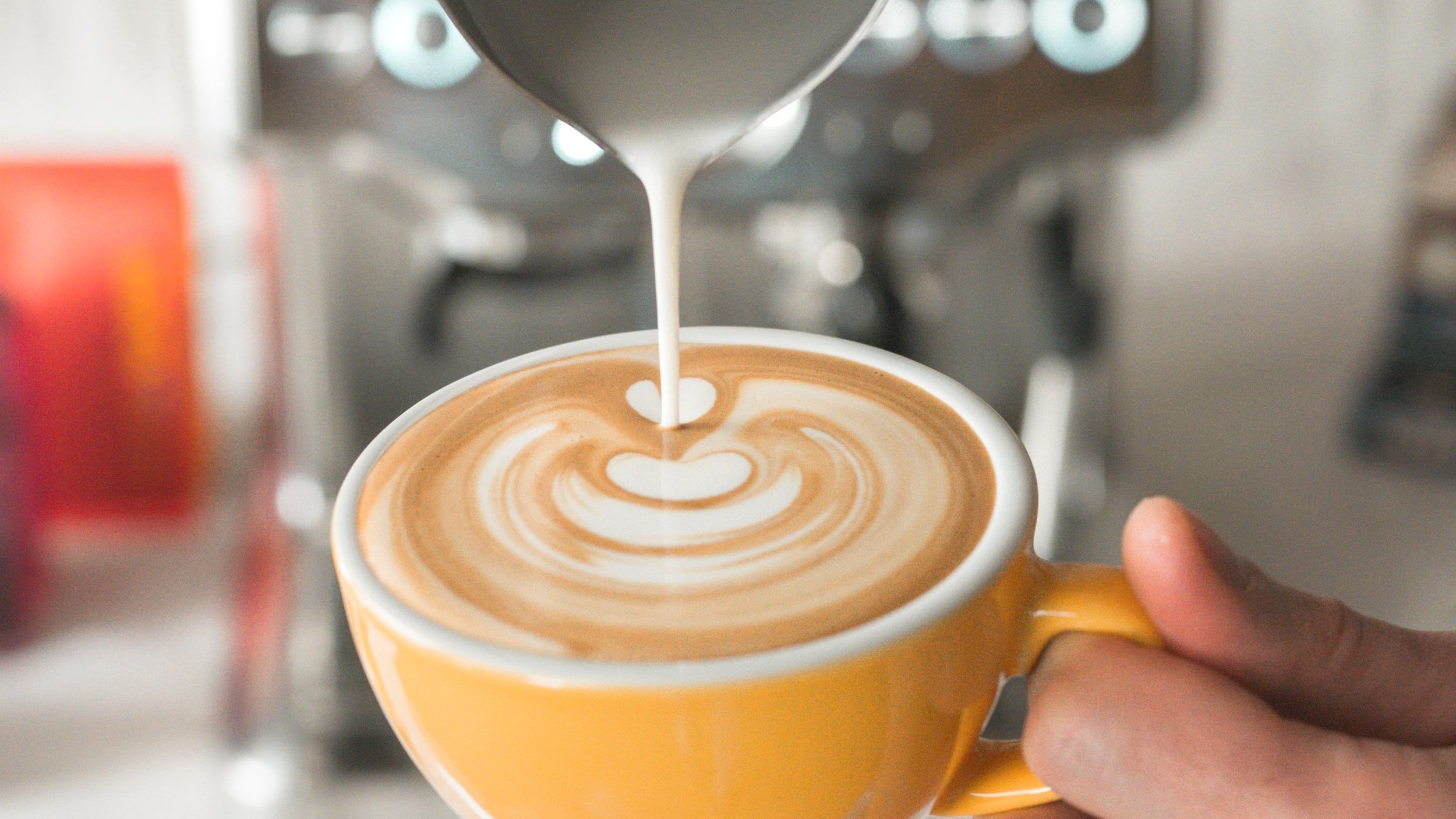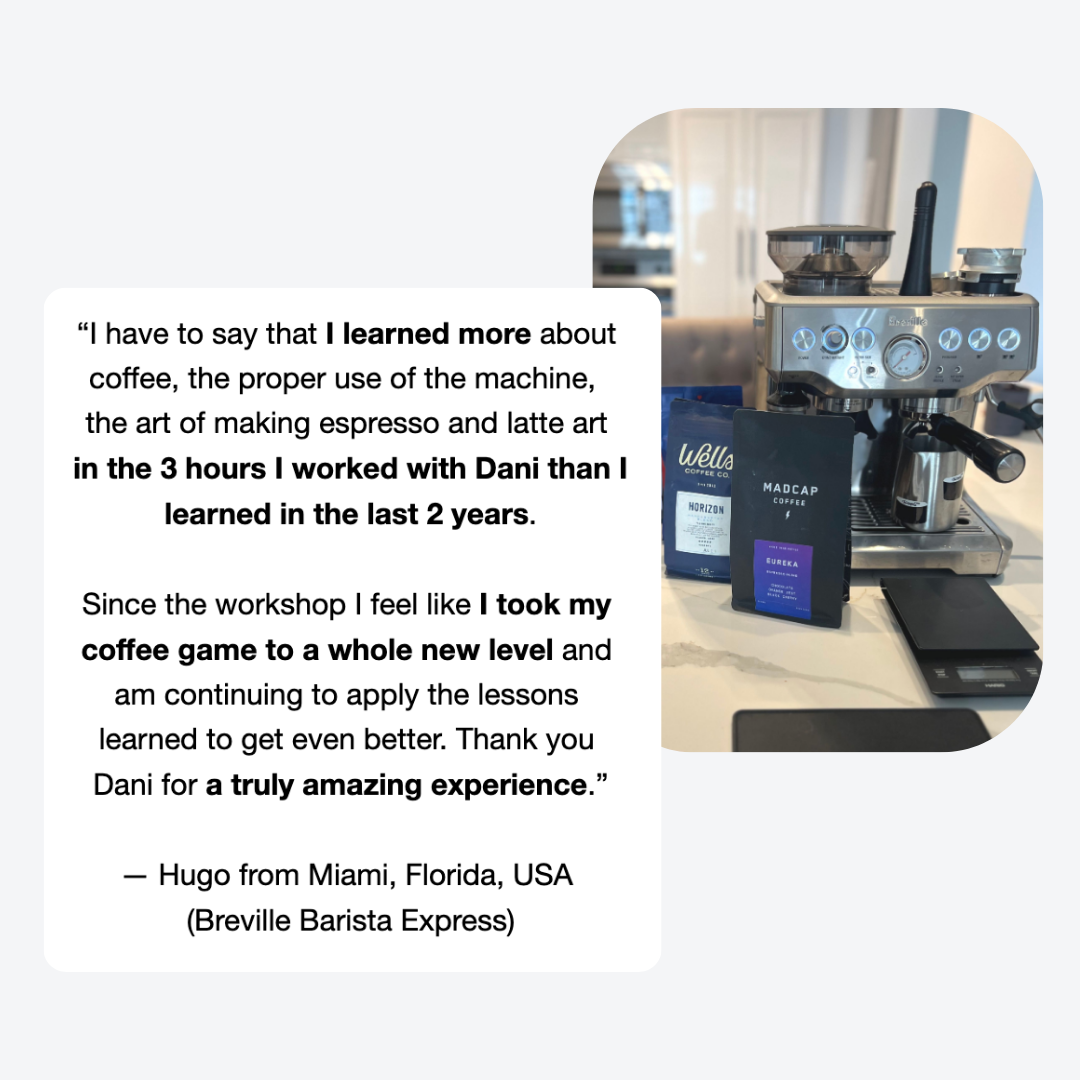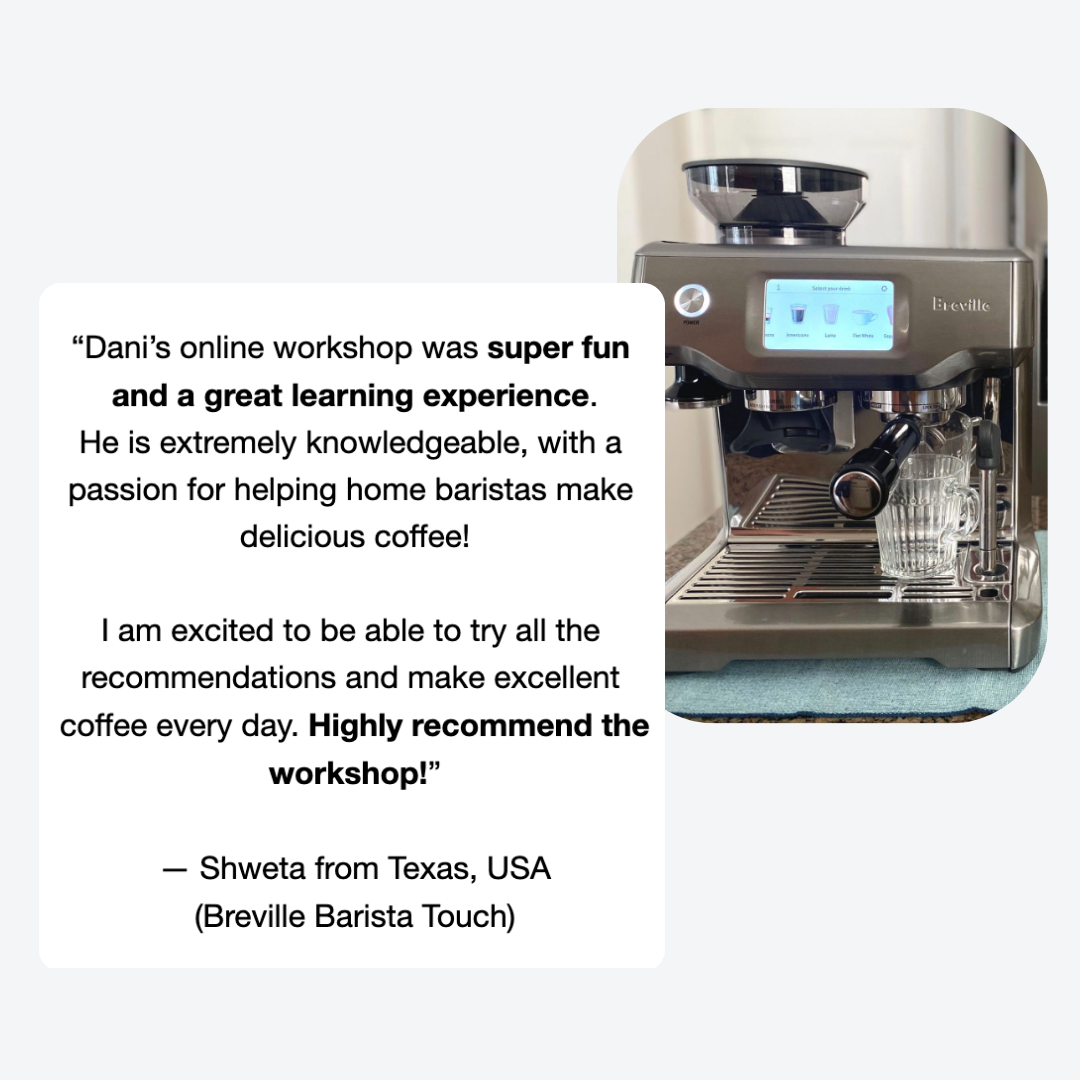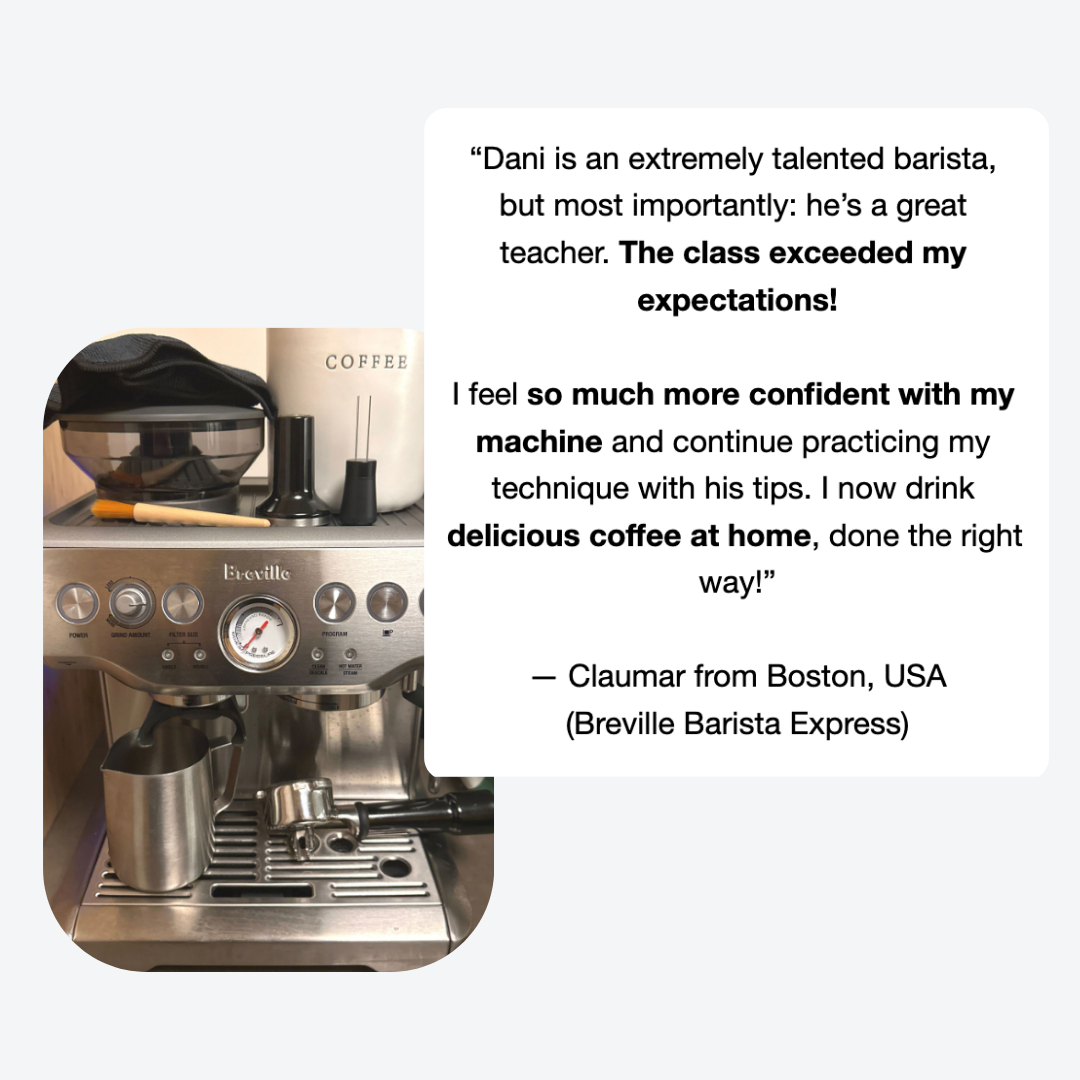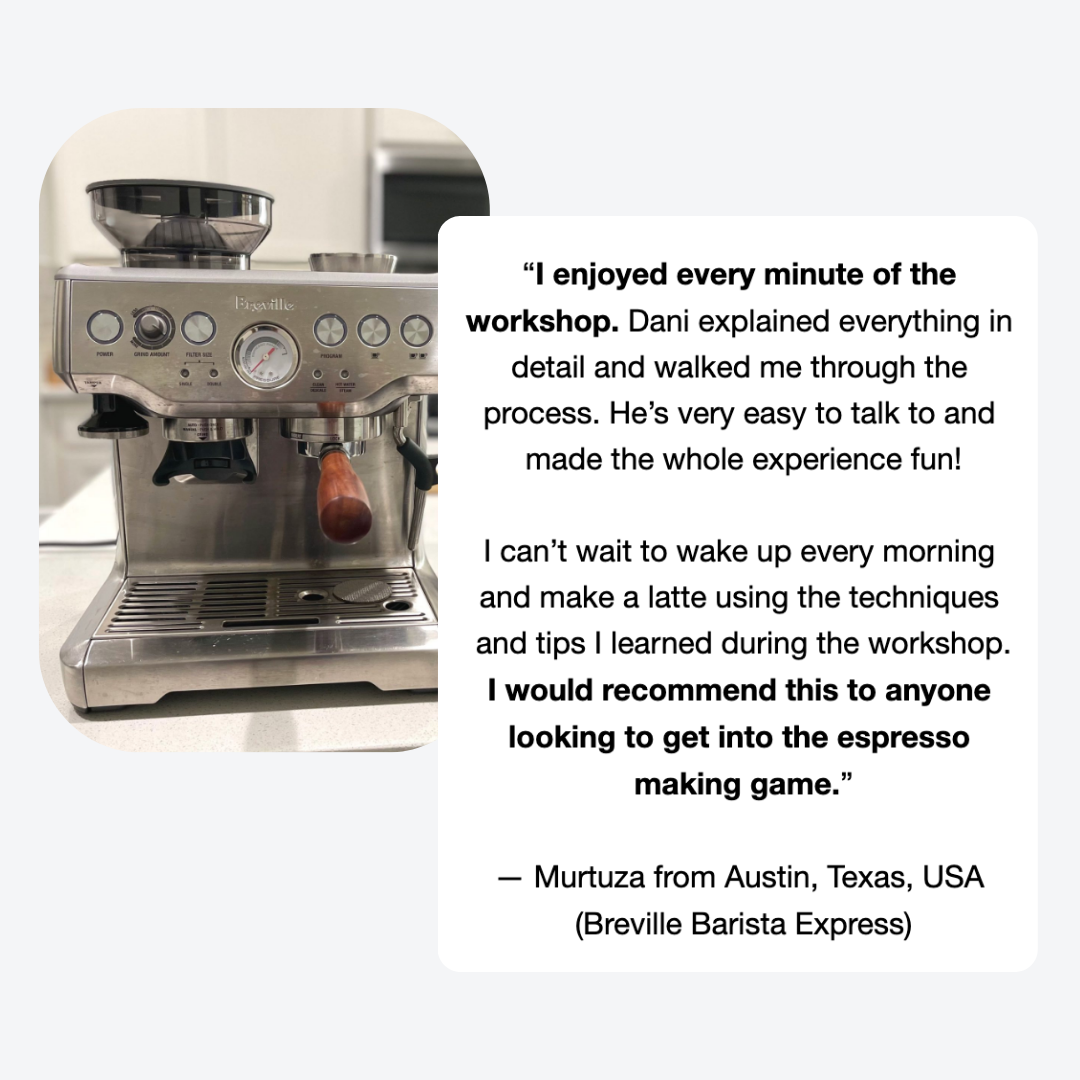How to make a delicious latte at home
3 key tips for home baristas
This is no surprise: the latte (or caffè latte) is an omnipresent milk based coffee drink, you’ll find in most cafés or restaurants that offer a coffee menu. With the rise of having an espresso machine and making espresso at home, it’s now easier than ever to prepare this delicious drink in the comfort of your own home.
For me, a latte symbolizes the beginning of the day, a pick-me-up before I start work, a moment of indulgence getting to enjoy this delicious mix of espresso and hot creamy steamed milk. Here are my 3 key tips to help you make a delicious latte at home!
Tip 1: Find a coffee that shines through milk
If you want to make delicious lattes at home, pay attention to the coffee beans you’re choosing, in particular:
Roast profile
When it comes to milk based coffees, I’ve always enjoyed a darker roast. That’s because a darker roast produces an espresso that has more texture and a richer syrupy taste, which cuts nicely through milk. You want that especially if you’re using whole milk or you steam a larger amount of milk to be added to the espresso.
These days it’s very common to find coffee beans that have been specifically roasted to be used as espresso in milk based drinks. In that case, the coffee’s flavors are meant to complement the sweetness and creaminess of the milk.
Flavor notes
I find a coffee with lower acidity and flavor notes such as chocolate, nuts, caramelized sugar etc. works particularly well in combination with milk. Ultimately, you want to avoid the milk completely overpowering the taste of the espresso, and so achieve a pleasant balance of flavors in the cup.
Coffee origin
Where the coffee is coming from plays a part too. What I found is that Central or South American coffees have a more moderate acidity and balanced notes of chocolate, fruits and nuts. In comparison, African coffees are more fruity.
You’ll usually find information about the above being presented on the packaging of the coffee beans.
Of course, at the end of the day, the way one likes their coffee is very much a matter of personal preference too. And so, if you prefer a more fruity espresso to go with your milk coffee, that’s perfectly fine too!
Tip 2: Tweak the brew ratio i.e. use ristretto style shots
The ristretto is essentially a version of espresso that is brewed using the same dose as for an espresso i.e. amount of ground coffee, but with less water. By “restricting” the amount of water being used, you’ll produce a richer, more flavorful and concentrated shot (in comparison with a normal espresso at a standard 1:2 brew ratio).
For this reason, I use a ristretto style shot when making a latte. Since the ristretto has a higher concentration of flavor, you get a stronger taste of coffee and a more balanced drink, without it tasting overly milky. Another benefit of using a ristretto shot is that it leaves more room in the cup to pour your desired latte art pattern. Finally, if you’re going to try a ristretto shot, I recommend using medium to medium-dark roasted coffee beans. A light roast ristretto may taste too sour.
My ristretto recipe at home: I usually use a medium-dark roast, I dose 18 grams of ground coffee and extract around 30 grams of espresso out.
For my latte at home: I use a larger cup, but not larger than 250ml, otherwise it’s too milky for me. Again, this is my personal preference and I definitely encourage you to try different espresso to milk ratios, until you find your favorite!
Tip 3: Get better cups to improve your latte art
This is an aspect often overlooked by many home baristas. If you’re keen on improving your latte art, the cup you choose for your latte is very important for how well you’ll be able to pour your pattern. I recommend picking up a cup that has a wide mouth/opening, which gives you more space to pour the milk and draw your pattern.
I see many home baristas using mugs or very tall and narrow cups (cylindrical shape, flat bottom, sharp angled walls). While you may like how these look, they can be challenging to pour into, even for experienced baristas. Working with cups that have a round shape, wide mouth and short height has definitely allowed me to practice and considerably improve my latte art skills.
I hope you find these tips helpful and, if you’d like to dive deeper, you may consider our espresso and latte art home barista workshops. Happy brewing!

